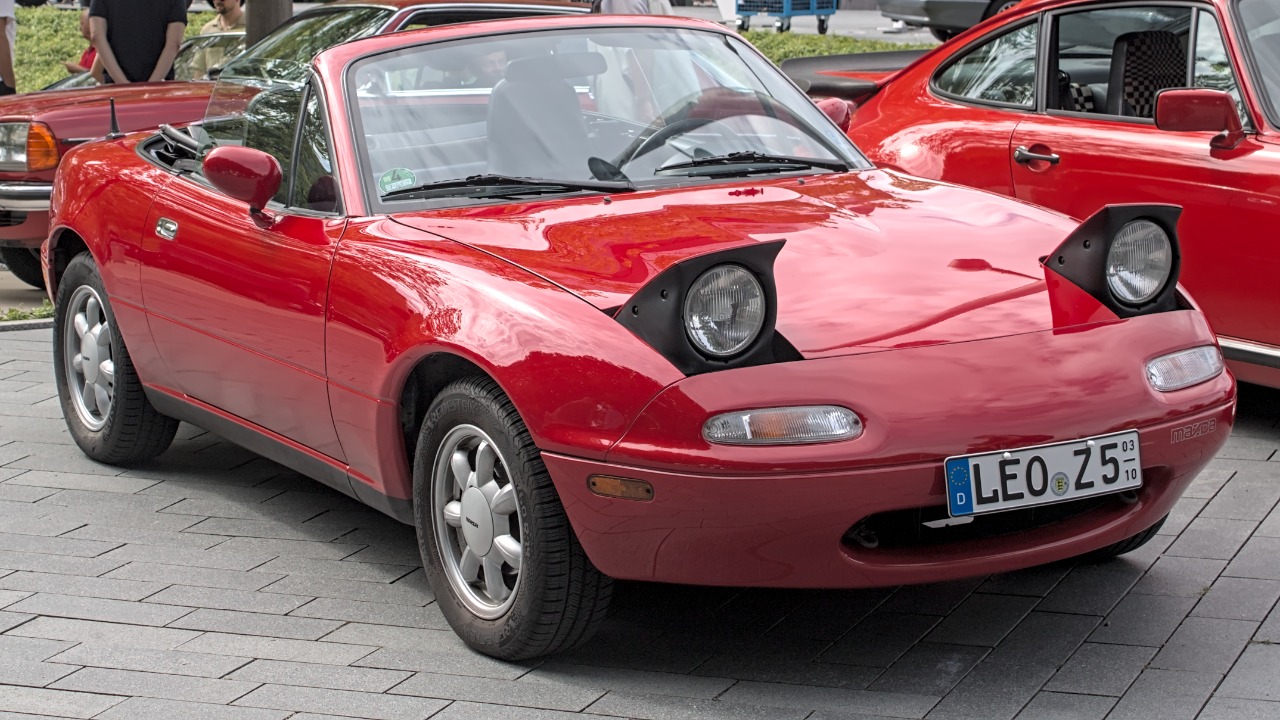
The Mazda Miata has long been celebrated for its blend of affordability and driving pleasure, and recent discussions suggest that we are currently experiencing a golden age for this iconic roadster. This sentiment stands out amid broader concerns about the decline of affordable enthusiast cars. Reflecting on the past, the 1990s were also hailed as a golden era for affordable sports cars, setting a precedent that the Miata continues to follow today.
The Enduring Appeal of the Miata Today
The Miata’s enduring appeal in 2025 is rooted in its ability to deliver a pure driving experience without breaking the bank. The current Miata lineup offers a balance of performance and affordability, making it accessible to a wide range of enthusiasts. Unlike many sports cars that have succumbed to luxury markups, the Miata remains a beacon of value. This is highlighted in a recent analysis, which underscores the Miata’s ability to provide real-world affordability metrics that resonate with everyday drivers. The Miata’s pricing strategy ensures that it remains within reach for those seeking a fun-to-drive vehicle without the financial burden often associated with sports cars.
Specific features of the Miata, such as its lightweight design and responsive handling, contribute to its status as an affordable option in 2025. These elements not only enhance the driving experience but also keep production costs manageable, allowing Mazda to offer the Miata at a competitive price point. This commitment to affordability is a key reason why the Miata continues to thrive in an era where many other sports cars have become prohibitively expensive. By maintaining a focus on core driving dynamics and simplicity, the Miata sustains the joy of driving for enthusiasts who might otherwise be priced out of the market.
Shifts in the Broader Enthusiast Car Landscape
While the Miata enjoys its golden age, the broader landscape for enthusiast cars is undergoing significant changes. According to a recent assessment, the current golden age of enthusiast cars is considered to be over, with production changes and market pressures affecting multiple brands. Factors such as electrification and regulatory demands are reshaping the availability of affordable sports cars, leading to a decline in options for buyers seeking fun-to-drive vehicles under $30,000. This shift has significant implications for car enthusiasts who value driving engagement but face limited choices due to rising costs and changing industry priorities.
The transition towards electrification presents both challenges and opportunities for the sports car market. While electric vehicles offer new possibilities for performance, they also come with higher production costs that can drive up prices. This trend is particularly concerning for those who have traditionally relied on affordable sports cars for their driving thrills. As the industry adapts to new regulations and consumer demands, the availability of budget-friendly sports cars may continue to dwindle, leaving the Miata as one of the few remaining options for enthusiasts on a budget.
Lessons from the 1990s Sports Car Boom
The 1990s are often remembered as a golden era for affordable sports cars, with models like the early generations of the Miata leading the charge. During this period, economic and manufacturing trends enabled the production of low-cost, high-engagement vehicles that captured the hearts of driving enthusiasts. The success of these models was driven by a focus on simplicity and performance, principles that continue to resonate with today’s Miata. By drawing on the lessons of the past, Mazda has managed to keep the Miata relevant and appealing in the current market.
The economic conditions of the 1990s allowed manufacturers to experiment with innovative designs and technologies without the burden of excessive costs. This environment fostered a spirit of creativity and competition that resulted in a diverse array of sports cars, each offering unique driving experiences. The Miata, with its lightweight construction and agile handling, exemplified the era’s emphasis on driver engagement. These qualities have been carried forward into the present, ensuring that the Miata remains a beloved choice for those seeking an authentic driving experience.
Why the Miata Stands Apart in 2025
In 2025, the Miata stands apart from other sports cars due to its continued affordability and Mazda’s unwavering commitment to the model. While many brands have shifted focus towards more expensive or electrified options, the Miata remains true to its roots, offering a pure driving experience at a reasonable price. This dedication to affordability is a key factor in the Miata’s success, allowing it to avoid the pitfalls that have plagued other sports cars in recent years. By maintaining a focus on core values, the Miata continues to deliver joy to drivers who prioritize engagement over luxury.
The Miata’s ability to remain relevant in today’s market is a testament to its timeless design and engineering. Drawing parallels to the 1990s golden era, the Miata embodies the same principles of simplicity and performance that made it a standout choice decades ago. This consistency has allowed the Miata to weather industry changes and remain a favorite among enthusiasts. As the automotive landscape continues to evolve, the Miata’s commitment to delivering an affordable, engaging driving experience ensures that it will remain a cherished option for years to come.
More from MorningOverview